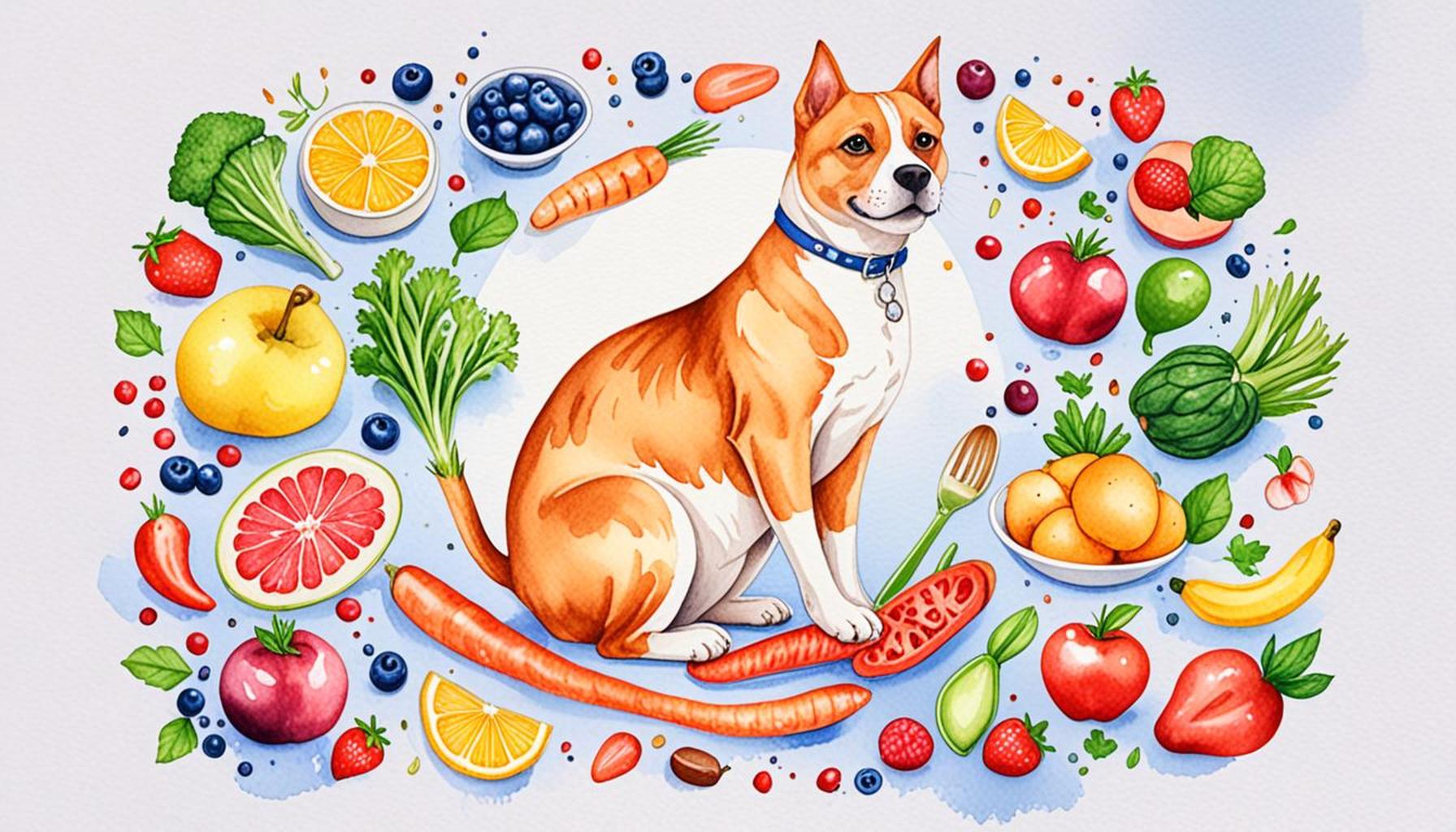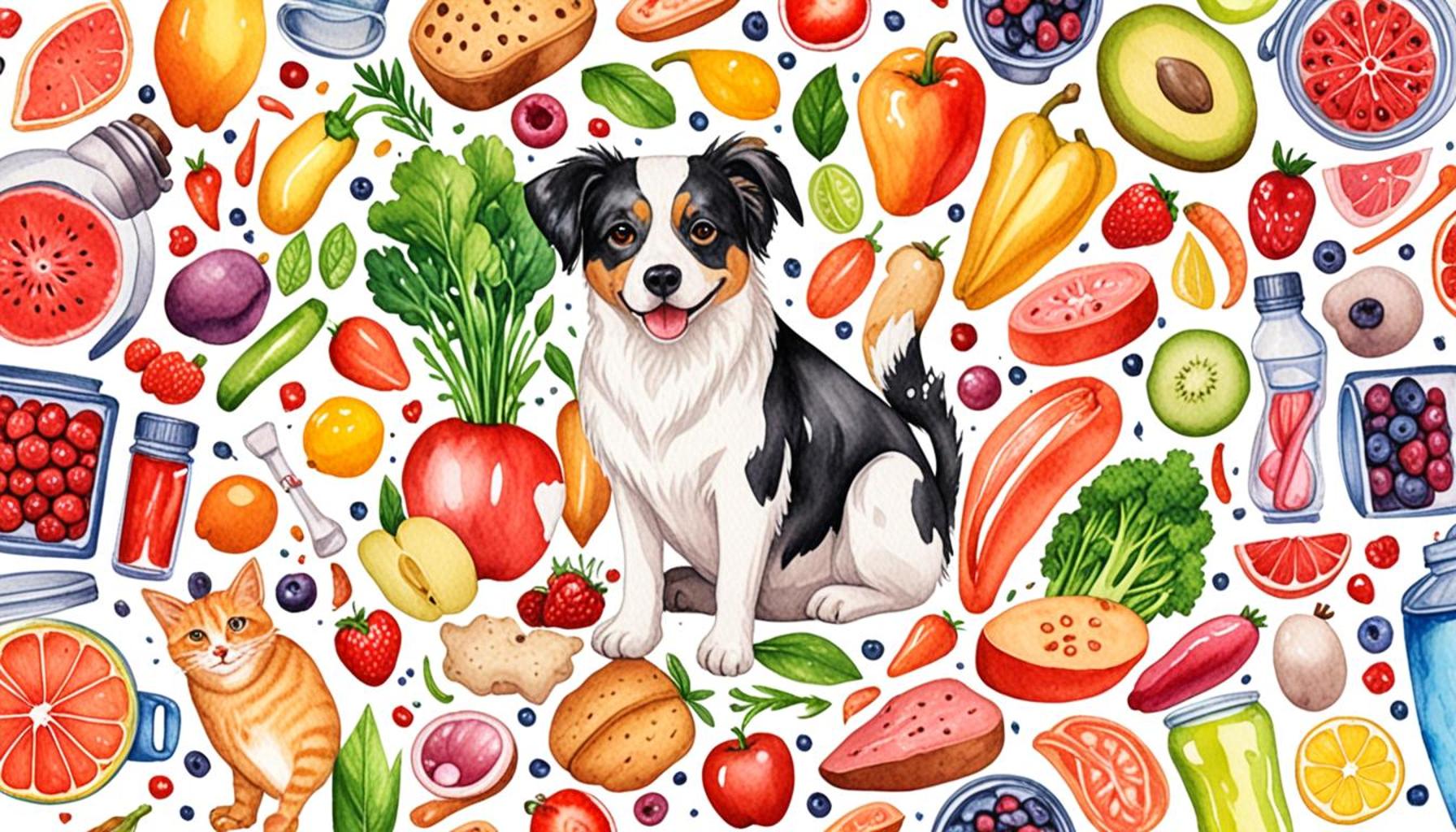Special Diets: How to Deal with Food Allergies in Pets

Understanding Food Allergies in Pets
Food allergies in pets can pose a substantial challenge for pet owners. As the prevalence of food sensitivities in animals continues to rise, many pets experience adverse reactions that affect their health and overall wellbeing. These reactions can manifest in a variety of ways, leading to symptoms ranging from uncomfortable itching to serious gastrointestinal disturbances.
Identifying food allergies is essential for providing appropriate care. Some common signs indicating that your pet might be experiencing a food allergy include:
- Itchy skin or excessive scratching: Pets may develop rashes, hot spots, or red patches on their skin due to food allergies. This discomfort can lead to behavioral changes, such as increased restlessness or aggression.
- Digestive problems such as vomiting or diarrhea: These symptoms can be particularly distressing for pet owners and can lead to further health complications if not addressed.
- Ear infections or inflammation: Chronic ear infections can often point to underlying food allergies, as pets with sensitivities frequently suffer from recurring health issues.
A special diet is often necessary to manage these sensitivities effectively. For example, many pet owners find success with limited-ingredient diets that help eliminate potential allergens. It’s crucial to consider various dietary options tailored to the unique needs of each pet.
When selecting a special diet for a pet with food allergies, keep in mind several key factors:
- Ingredient transparency: Choose foods with clearly labeled ingredients to ensure you know exactly what you’re feeding your pet. Brands that use whole food sources typically provide better clarity on their contents.
- Limited ingredients: Opt for diets that restrict exposure to common allergens like beef, chicken, dairy, wheat, and soy. These limited-ingredient formulas reduce the chances of triggering adverse reactions.
- Veterinary guidance: Consult a veterinarian for personalized recommendations tailored to your pet’s specific symptoms and nutritional needs. They may suggest conducting an elimination diet to accurately pinpoint the offending ingredient.
Understanding food allergies in pets not only assists in diagnosis and treatment but also empowers pet owners to take informed actions. Making appropriate adjustments in diet can lead to a healthier, more comfortable life for your furry companions. As the realm of pet nutrition continues to evolve, it is worthwhile to explore the options available, including hypoallergenic and grain-free diets that are increasingly gaining popularity. Taking the necessary steps towards understanding and addressing food allergies can significantly improve your pet’s quality of life.

DIVE DEEPER: Click here for essential tips
Special Diet Strategies for Managing Food Allergies
As a pet owner navigating the complexities of food allergies, it is essential to establish a tailored dietary plan that addresses your pet’s unique sensitivities. With so many options available on the market, selecting a suitable diet can be overwhelming. Understanding the various dietary strategies is vital for providing your furry friend with the best possible care.
When exploring special diets, consider the following approaches:
- Hypoallergenic Diets: These diets are specifically formulated to minimize the risk of allergic reactions. They often contain hydrolyzed proteins—ingredients that have been broken down into smaller components to reduce reactivity. Many pet owners find these diets effective in managing their pets’ food allergies, as they provide essential nutrients without triggering adverse responses.
- Novel Protein Diets: If your pet’s allergies are linked to common protein sources, a novel protein diet may be a beneficial alternative. These diets incorporate less common protein sources, such as duck, salmon, or kangaroo, helping pet owners avoid allergens while ensuring their pets receive adequate nutrition.
- Grain-Free Diets: For pets sensitive to grains, grain-free diets can serve as a suitable option. These diets replace traditional carbohydrates like rice and corn with alternatives such as sweet potatoes or peas, catering to pets that struggle with grain-related allergies.
Additionally, the importance of ingredient sourcing cannot be overlooked. High-quality, recognizable ingredients are key to ensuring a safe and nutritious diet for pets with food allergies. Many pet owners turn to brands that prioritize whole food sources, offering transparency in labeling to instill confidence in their food choices.
Elimination Diets: A Diagnostic Tool
A particularly effective method for pinpointing allergens is the elimination diet. This approach involves feeding your pet a single protein and carbohydrate source for a specified period, typically ranging from 8 to 12 weeks. By gradually reintroducing other ingredients step by step, pet owners can monitor any changes in their pet’s symptoms, allowing for precise identification of trigger foods.
It’s crucial to execute an elimination diet under the guidance of a veterinarian to ensure it is done safely and effectively. Your vet may also recommend supplements or additional nutritional adjustments during this process to avoid nutritional deficiencies.
Implementing Dietary Changes
Transitioning to a new diet should be done gradually to prevent gastrointestinal distress. A shift over a period of 7 to 10 days allows pets to adapt without experiencing upsetting symptoms. Start by mixing a small amount of the new food with their existing diet, slowly increasing the proportion of the new food while decreasing the old.
Understanding the array of special diets available to combat food allergies in pets equips owners with the tools needed to enhance their pets’ quality of life. By investing the time to research and consult with a veterinarian, pet owners can provide a comprehensive care plan that addresses their pet’s dietary needs while minimizing allergic reactions. In our next section, we will delve deeper into practical tips for monitoring your pet’s health and adjusting their diet as necessary.
| Category | Advantages |
|---|---|
| Elimination Diets | These diets help identify specific food allergies by removing potential allergens and gradually reintroducing them. |
| Custom Formulations | Allows pet owners to tailor their pet’s diet to unique needs, ensuring optimal nutrition without allergens. |
| Natural Ingredients | Focuses on wholesome ingredients that are less likely to cause allergies, promoting better overall health. |
| Increased Energy Levels | A balanced, allergy-friendly diet can significantly improve your pet’s vitality, enhancing their quality of life. |
Exploring the challenges and solutions for food allergies in pets is crucial for every pet owner. With a proper understanding of these special diets, owners can make informed decisions that positively affect their furry friends. Implementing dietary changes not only assists in alleviating allergic reactions but also promotes healthier, happier pets. Education on ingredient sourcing, the importance of reading labels, and consulting veterinaries further amplifies the benefits derived from these special dietary choices. Pet allergies are common but manageable when addressed effectively. By staying informed and proactive, guardians can ensure their pets lead fulfilling, energetic lives despite dietary restrictions.
DIVE DEEPER: Click here to learn more
The Role of Fresh and Homemade Diets in Allergy Management
While commercial special diets provide convenient solutions for dealing with food allergies in pets, some pet owners are opting for fresh and homemade diets to take control of what their pets consume. This approach not only allows for greater customization but also ensures that pet owners know exactly what ingredients their pets are receiving. However, creating a balanced homemade diet requires careful consideration and knowledge.
When preparing homemade meals for pets with food allergies, pet owners should prioritize nutrition and ingredient sourcing. It’s advisable to consult a veterinarian or a pet nutritionist to formulate recipes that meet all necessary dietary requirements. This collaboration can help avoid common pitfalls that lead to deficiencies or imbalances in essential nutrients.
Choosing the Right Ingredients
When selecting ingredients for a homemade diet, it is crucial to avoid any known allergens while incorporating a variety of safe food sources. Consider using proteins like turkey or fish, paired with safe carbohydrates such as quinoa or pumpkin. Adding in vegetables like carrots or green beans can enhance the nutritional value while providing fiber.
Another critical aspect of a homemade diet is safety and hygiene. The risk of contamination exists, just as with any food preparation process, so it’s vital to use clean cooking practices. It’s recommended that pet owners cook meat thoroughly and store prepared meals in the refrigerator to prevent spoilage.
Commercial vs. Homemade Diets: Pros and Cons
Deciding between commercial special diets and homemade meals requires weighing the pros and cons of each. Commercial diets often come pre-formulated to ensure balanced nutrition with minimal effort on the owner’s part. However, some pets may not respond well to specific brands or formulations.
On the other hand, homemade diets allow for full customization, which is particularly valuable for pets with complex allergies. Nonetheless, these can be time-consuming to prepare and may require more knowledge on nutrient balance. Pet owners must remain diligent and willing to put in the effort needed to ensure their pets receive quality nutrition tailored to their allergens.
Monitoring and Adjusting the Diet
Implementing a diet to manage food allergies is only the first step; ongoing monitoring of your pet’s health is crucial. Owners should keep a close eye on any changes in their pets’ symptoms and well-being as they transition to new diets. Documenting any allergic responses can help identify problematic foods more effectively.
Additionally, it’s advisable for pet owners to schedule regular veterinary check-ups to assess their pet’s health and nutritional status. Veterinarians can provide invaluable insights on whether the current dietary strategy is effective and suggest necessary adjustments as pets age or as dietary requirements change.
Pet owners should consider the fine balance of nutrition, ingredient sourcing, and preparation methods when crafting the perfect diet for their four-legged companions. By embracing a tailored approach that suits their pets’ unique allergies, owners can greatly enhance the quality of life for pets struggling with food sensitivities.
DON’T MISS: Click here for essential tips
Conclusion: Navigating Food Allergies in Pets
Managing food allergies in pets is a multifaceted journey that requires careful consideration and ongoing commitment. Whether choosing a commercial special diet or preparing homemade meals, it is essential for pet owners to prioritize their furry friends’ health and well-being. A customized approach can be incredibly rewarding, offering pets the opportunity to thrive despite their food sensitivities.
As highlighted throughout this article, the right ingredients play a significant role in developing a balanced diet. By working closely with a veterinarian or a certified pet nutritionist, owners can avoid detrimental health pitfalls associated with incorrect dietary choices. Continuous monitoring of a pet’s health is equally important—careful observation can lead to insightful conclusions about which foods contribute to better overall health and which should be avoided.
Moreover, with the rise of fresh diets, pet owners are better equipped to manage their pets’ allergies while ensuring nutritional balance. Exploration into these homemade options encourages deeper engagement in pet care, reflecting a growing trend of pet parents wishing to provide holistic care for their animals. However, consistent diligence is crucial, as the preparation of homemade meals demands a commitment to nutritional integrity and hygiene practices.
Ultimately, the journey toward understanding and managing food allergies in pets is ongoing, encouraging pet owners to stay informed and adaptable to their pet’s changing needs. By offering improved dietary solutions and remaining vigilant, pet owners can help their furry companions lead happier, healthier lives. Therefore, embracing tailored nutrition strategies not only enhances quality of life but also fosters a stronger bond between pets and their owners.


